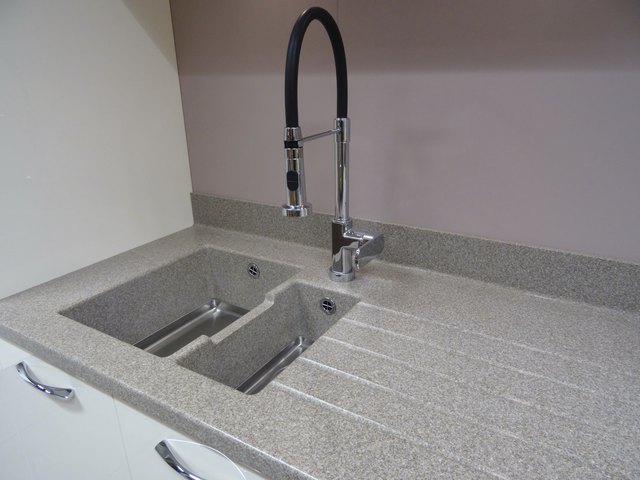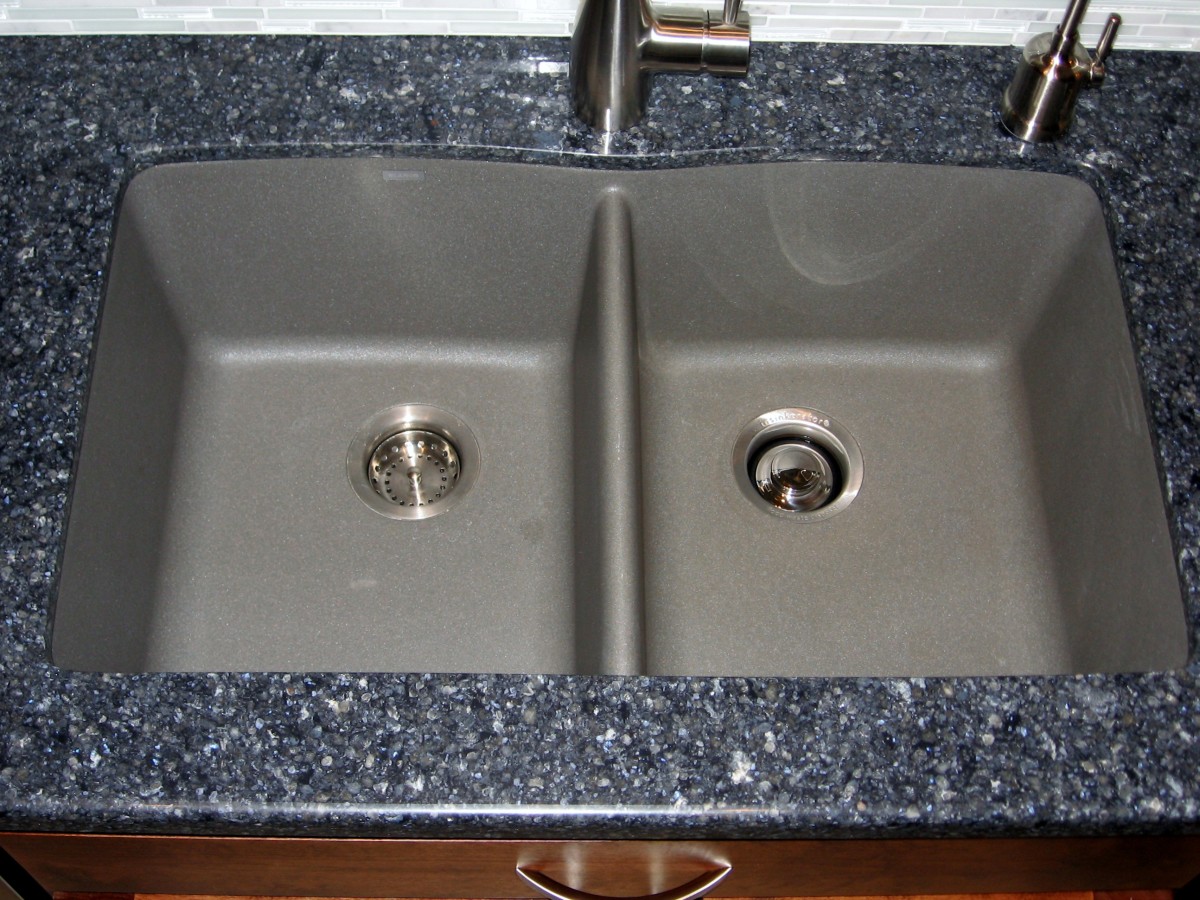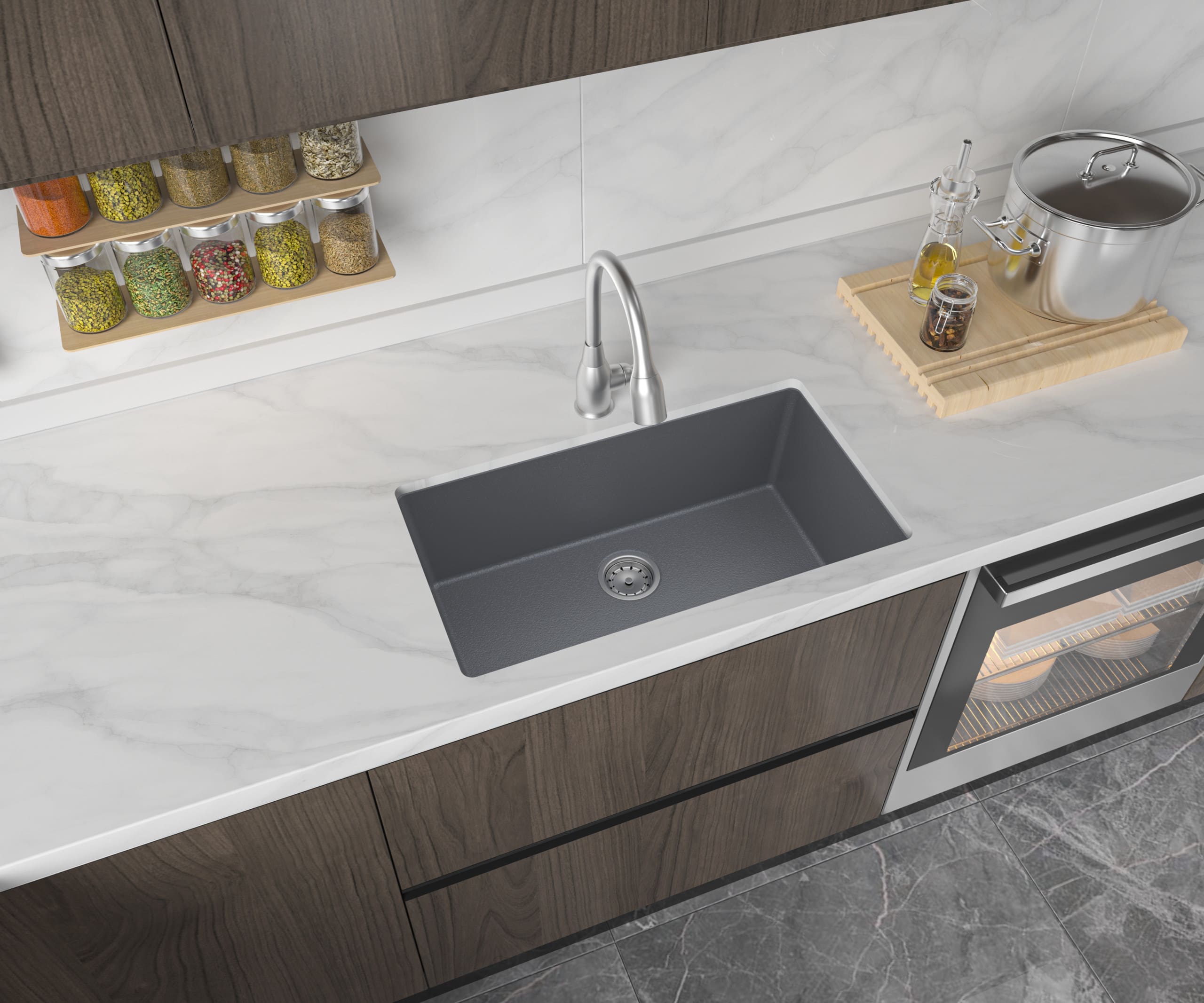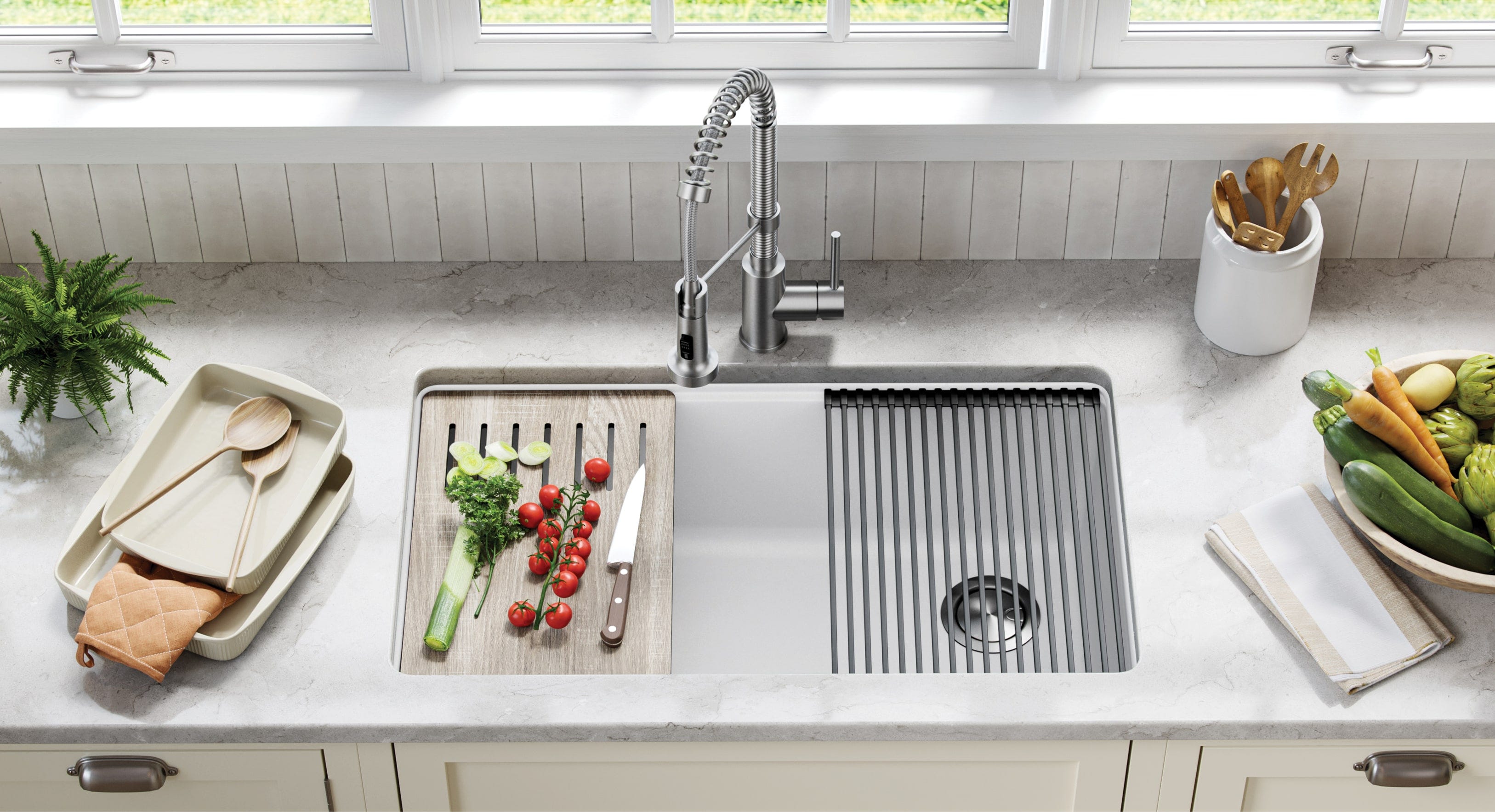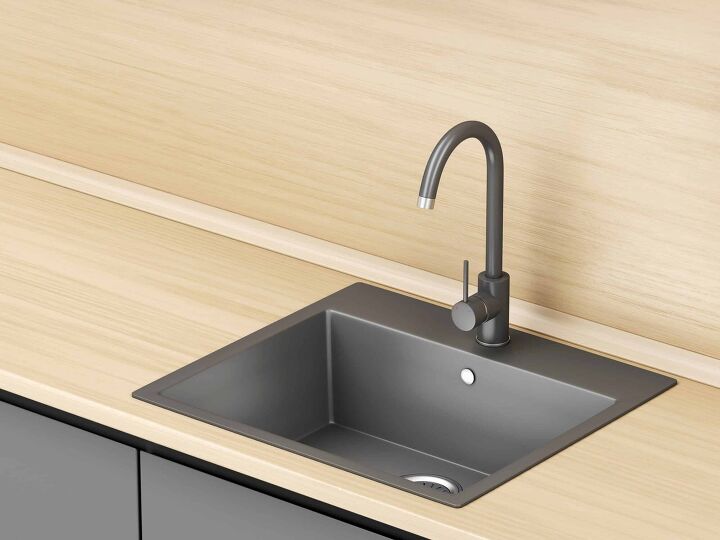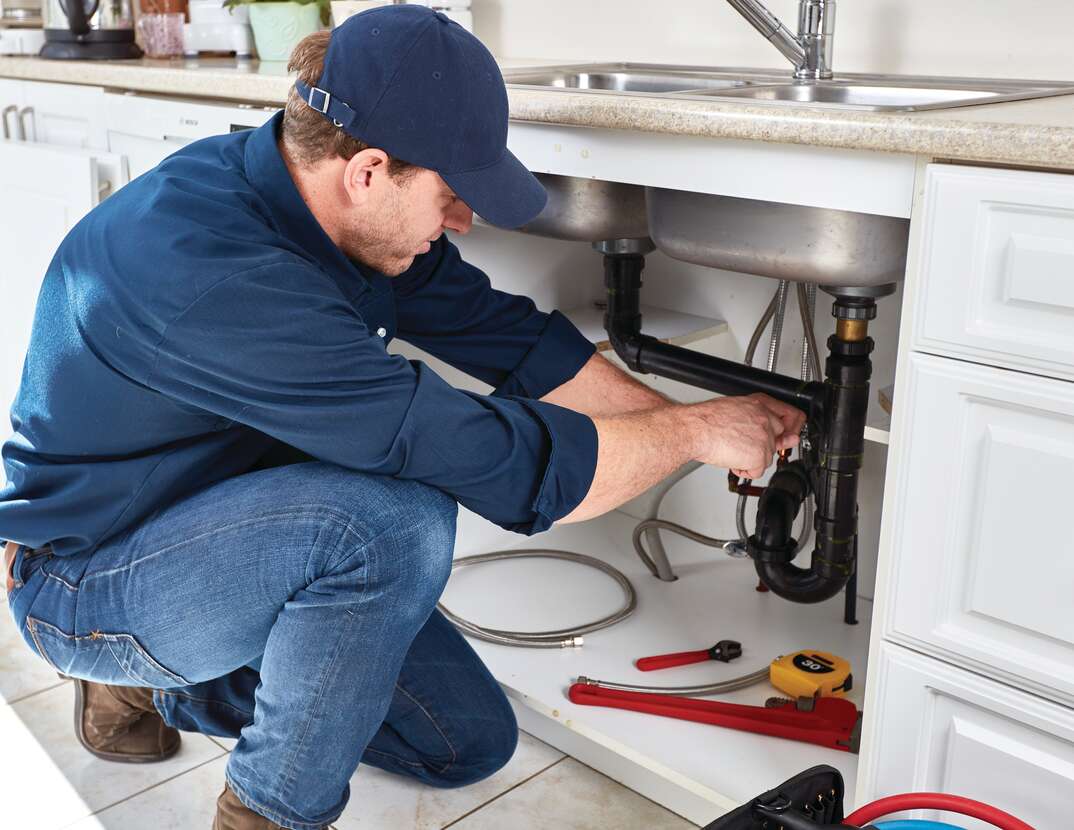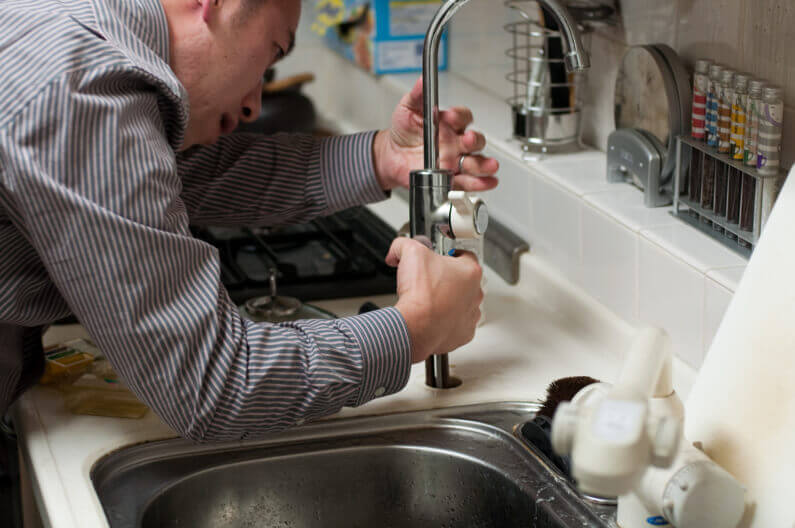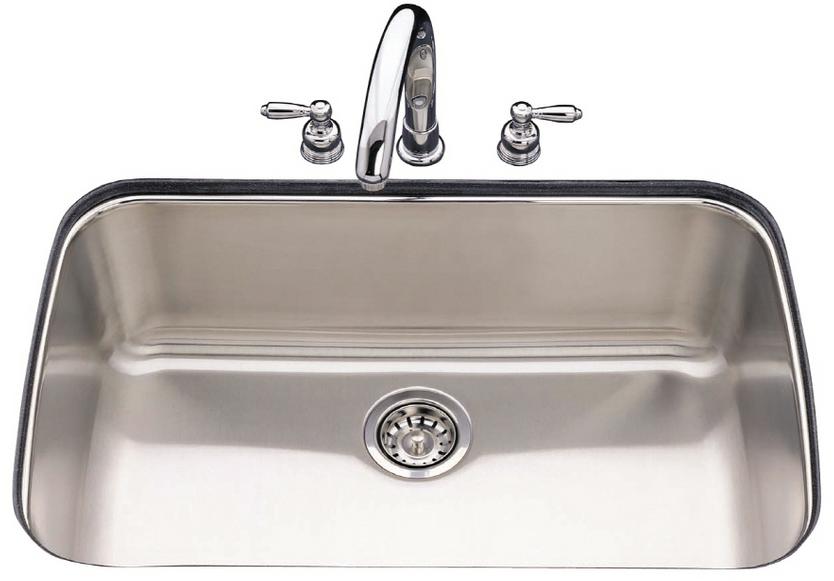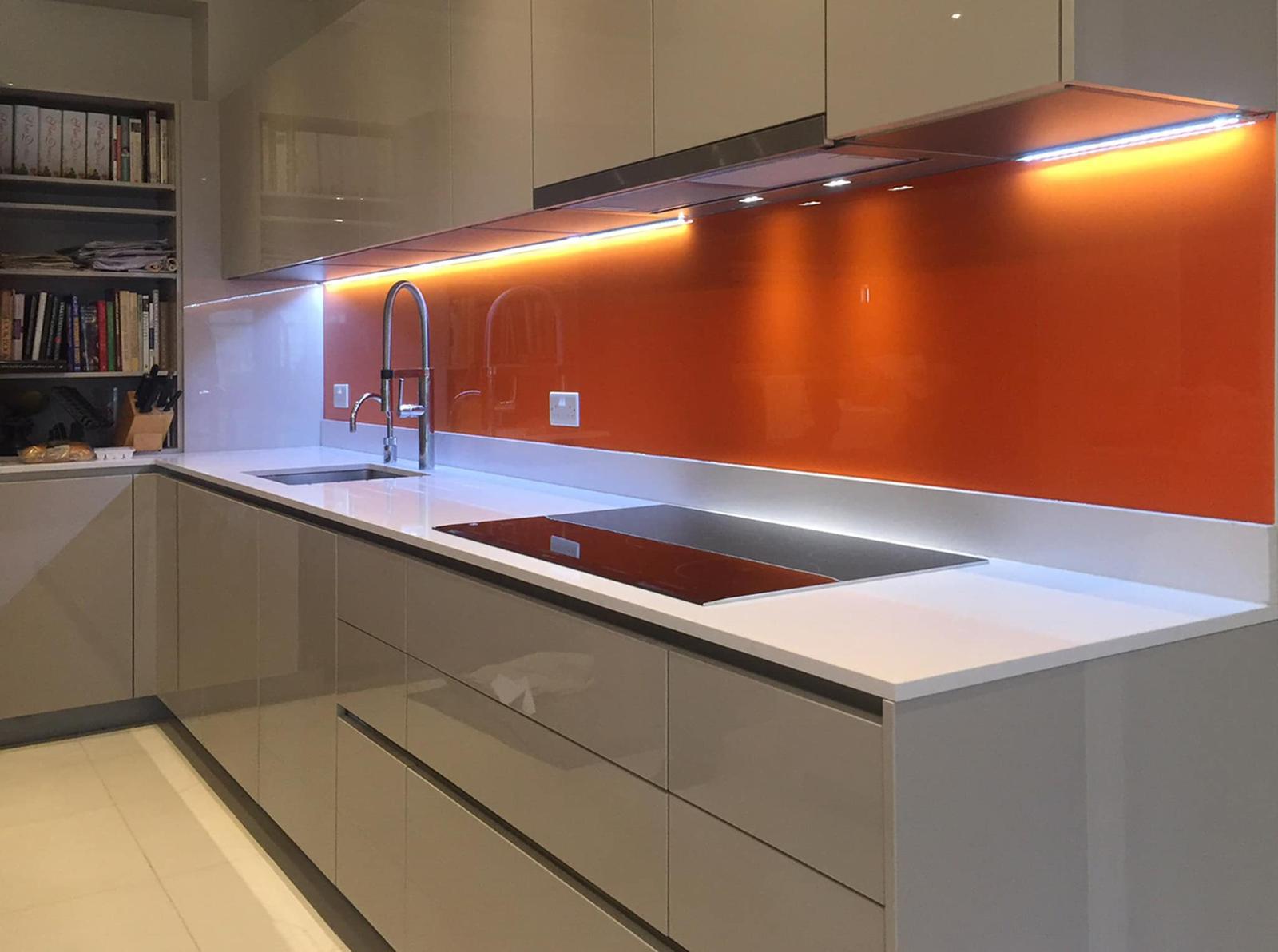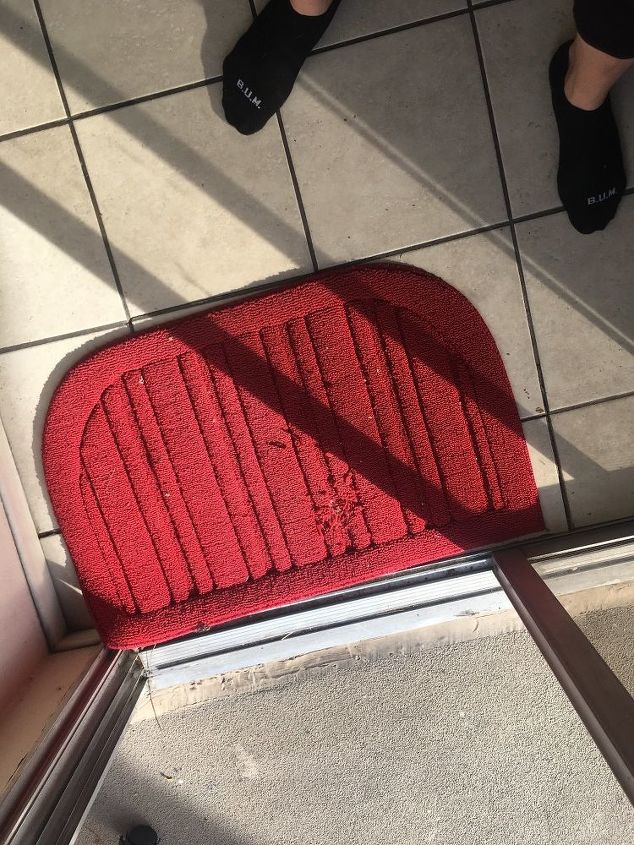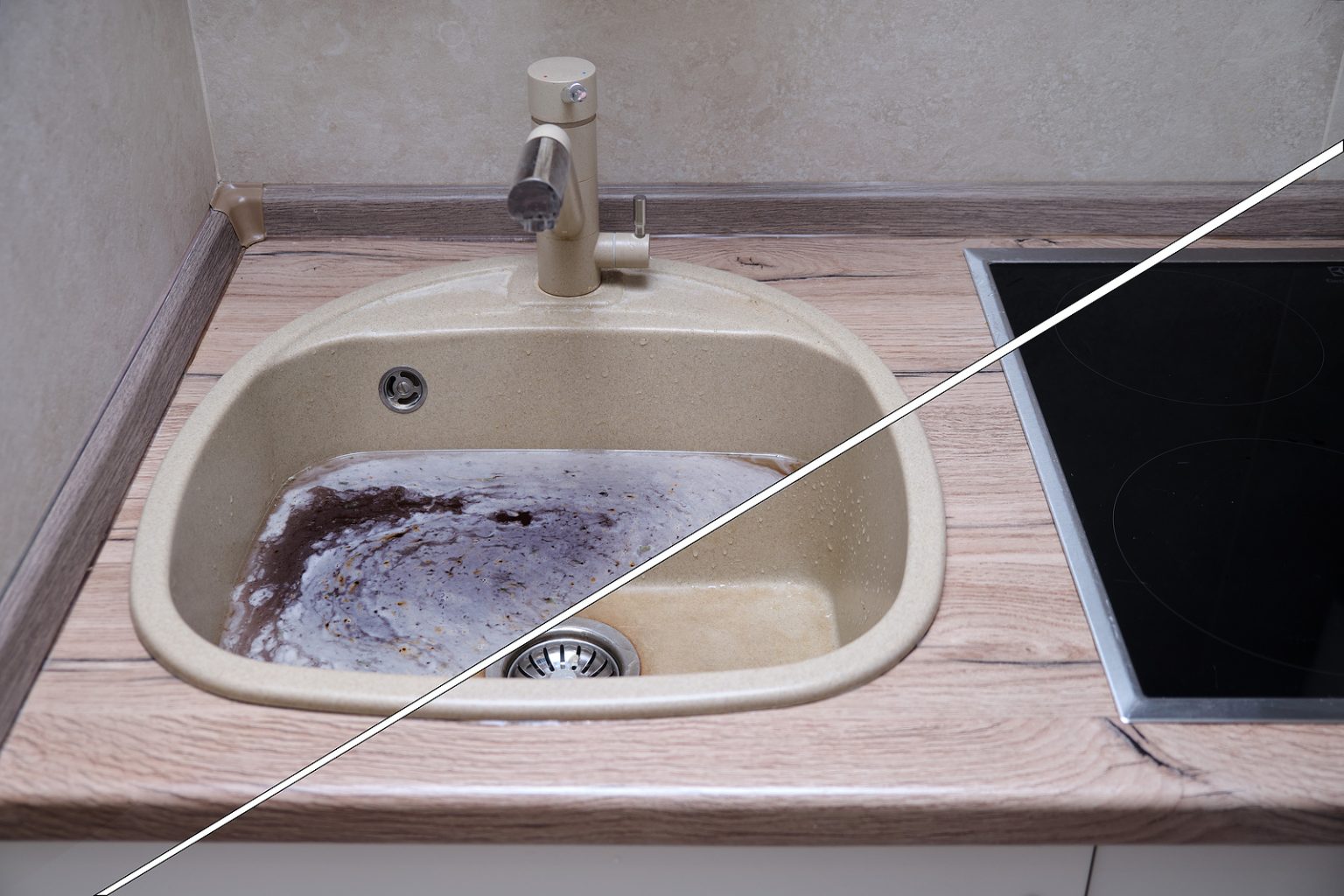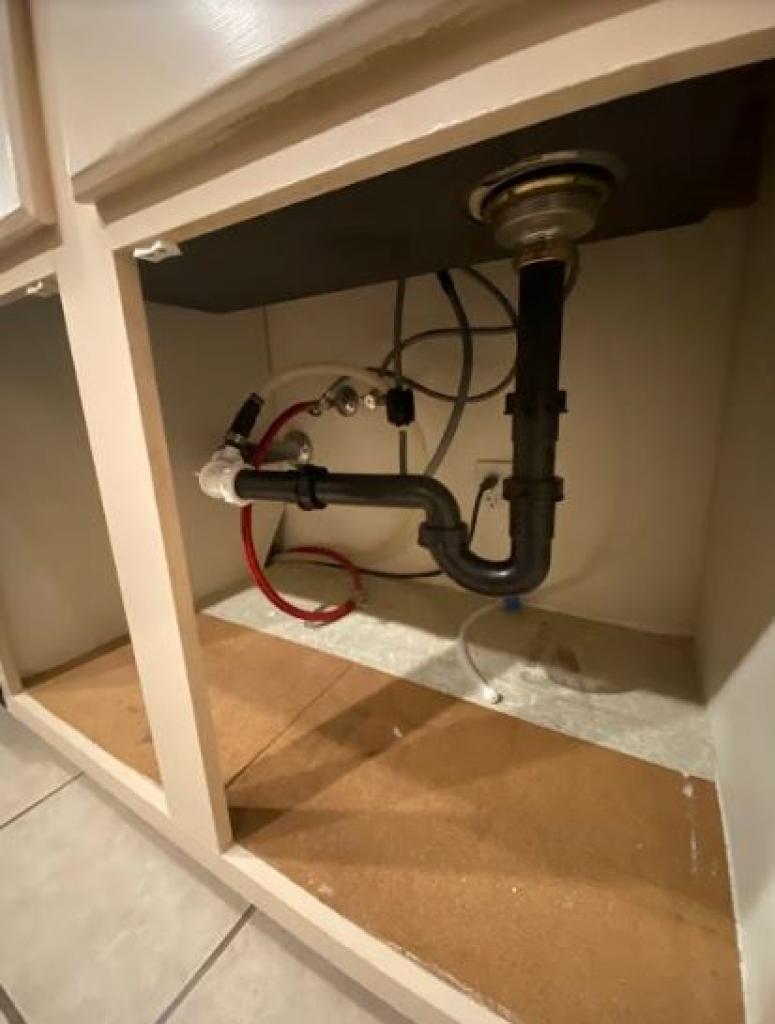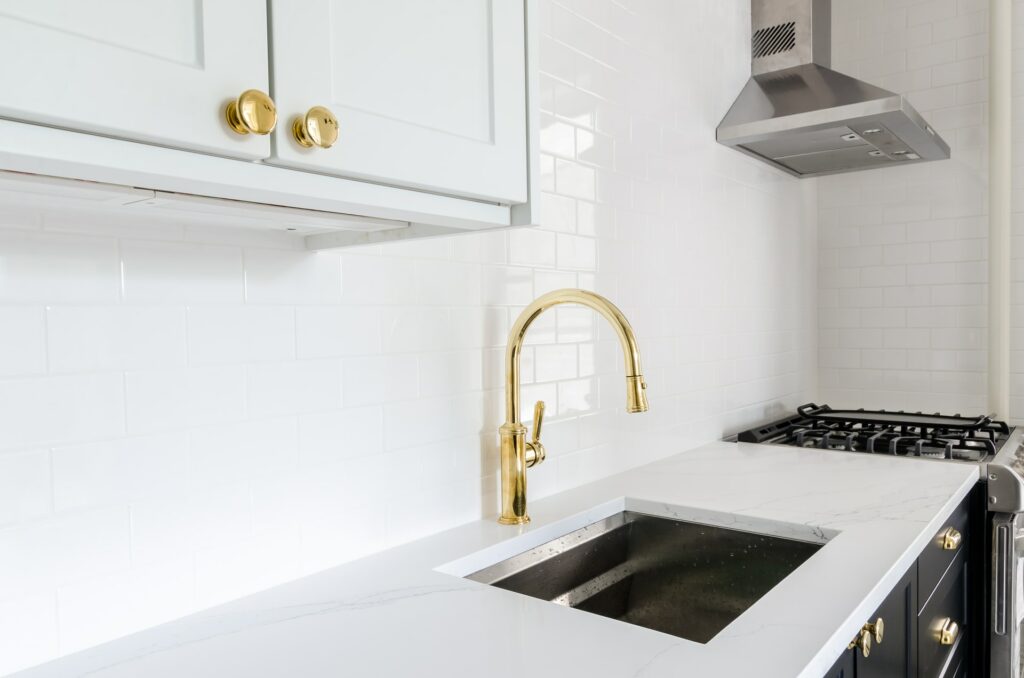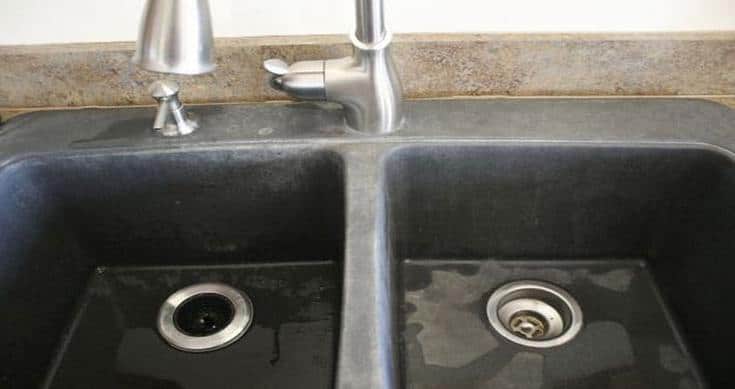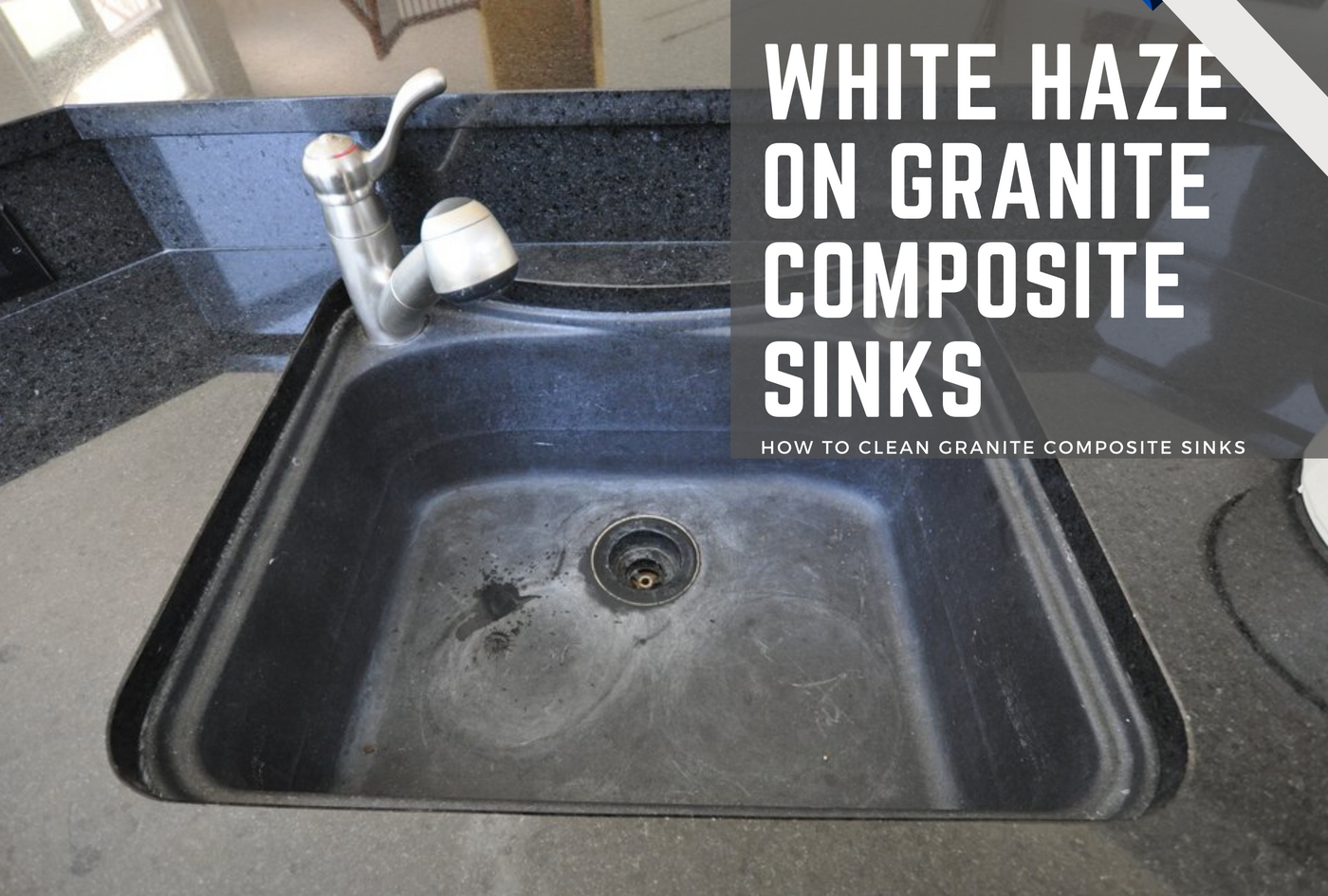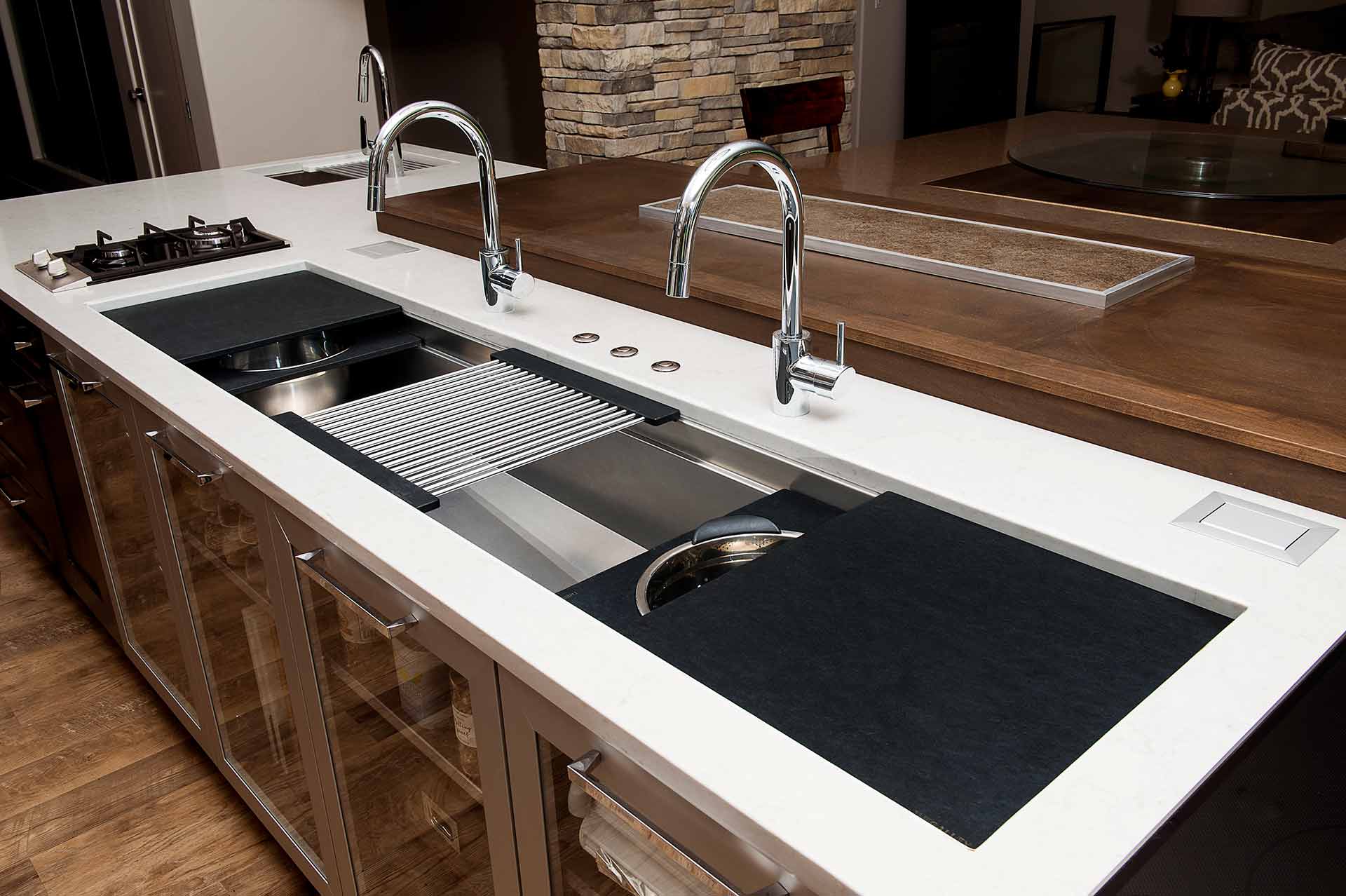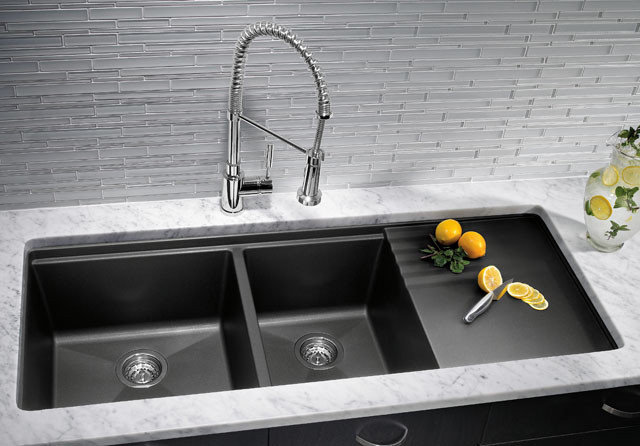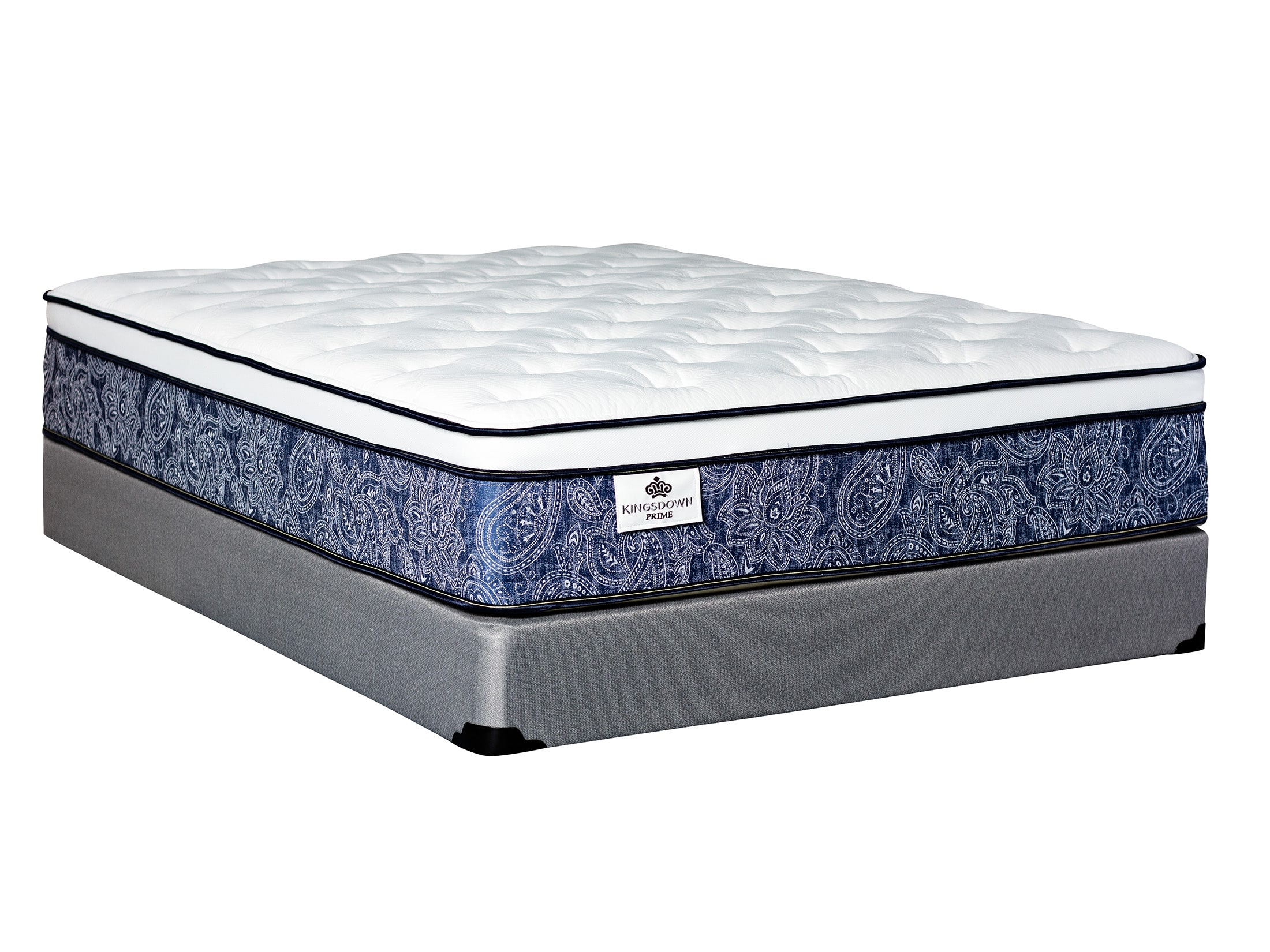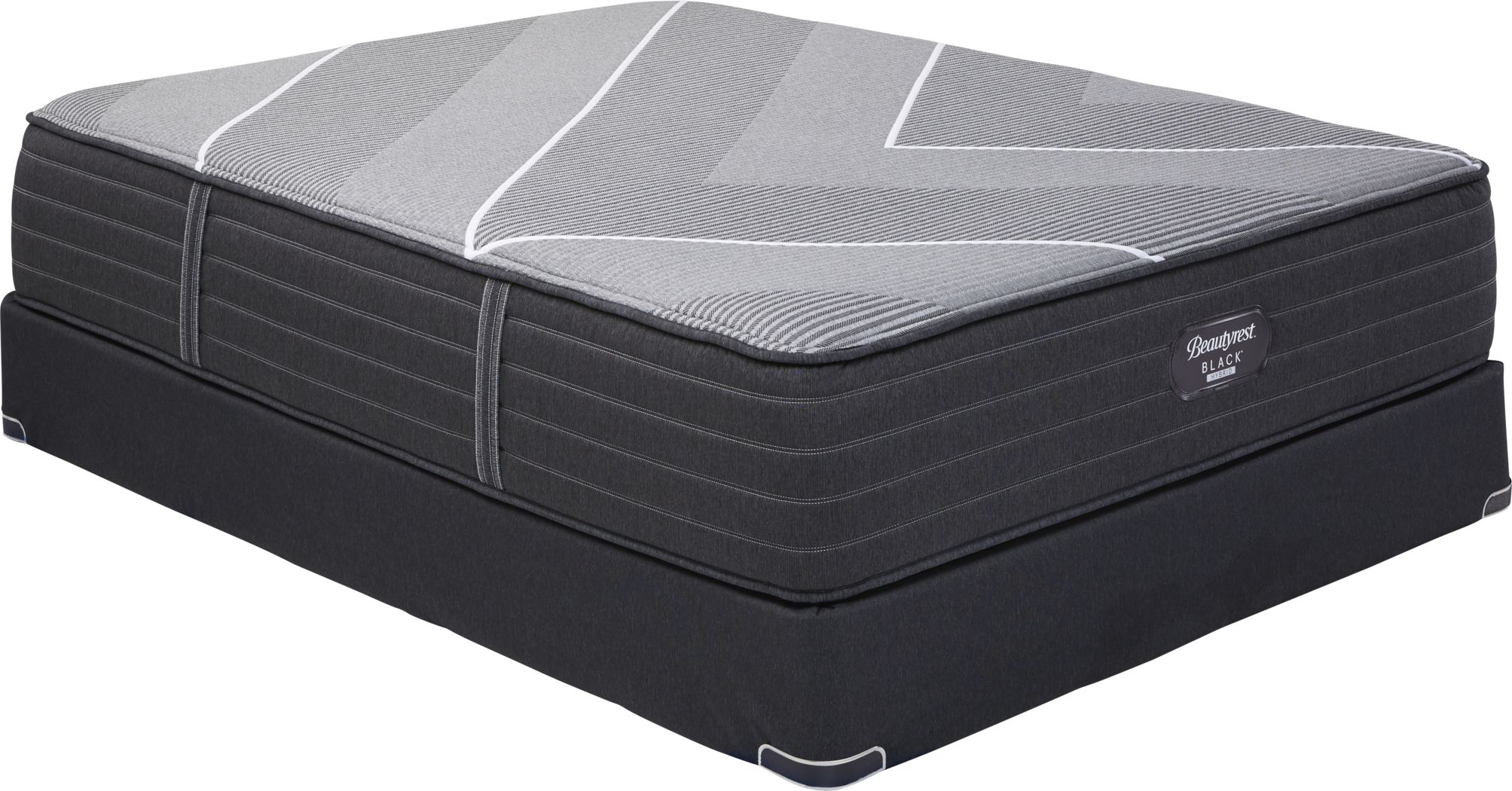If you have a composite kitchen sink, chances are you've experienced some form of damage or wear and tear over time. These sinks, made from a combination of materials such as quartz, granite, and resin, are known for their durability and resistance to scratches and stains. However, like any other fixture in your kitchen, they can still get damaged and require some repairs. In this guide, we'll walk you through the steps of repairing a composite kitchen sink so you can keep it looking like new for years to come.How to Repair a Composite Kitchen Sink
The first step to repairing a composite kitchen sink is to identify the type of damage. Common problems with composite sinks include cracks, scratches, and stains. Each issue may require a different approach, so it's important to assess the damage before proceeding with any repairs. Once you've determined the problem, follow these steps to fix your sink: 1. For cracks: Clean the area around the crack with a mild detergent and warm water. Dry it thoroughly and then apply an epoxy resin over the crack. Smooth out the resin and let it dry completely before using the sink again. 2. For scratches: Use a fine-grit sandpaper to gently sand the scratched area. Be sure to sand in the direction of the grain to avoid creating more scratches. Once the scratch is no longer visible, wipe the area with a damp cloth and then dry it. Apply a composite sink polish to restore the sink's shine. 3. For stains: Mix equal parts baking soda and water to create a paste. Apply the paste to the stain and let it sit for a few hours. Then, scrub the stain with a soft-bristled brush and rinse with warm water. Repeat the process if necessary.Composite Kitchen Sink Repair: A Step-by-Step Guide
Repairing a composite kitchen sink can be a DIY project, but it's important to keep a few tips and tricks in mind to ensure the best results: 1. Use the right products: When repairing your sink, be sure to use products specifically designed for composite materials. Using harsh chemicals or abrasive cleaners can cause further damage to your sink. 2. Work in a well-ventilated area: If you're using any type of chemical or adhesive, be sure to work in a well-ventilated area to avoid inhaling any fumes. 3. Test a small area first: Before applying any product to your entire sink, test it on a small, inconspicuous area to make sure it doesn't cause any damage or discoloration. 4. Don't rush: Take your time when repairing your sink to ensure the best results. Rushing through the process can lead to mistakes and further damage.DIY Composite Kitchen Sink Repair: Tips and Tricks
As mentioned earlier, composite kitchen sinks can face a variety of issues. Here are some of the most common problems and how to fix them: 1. Cracks: Cracks can occur from heavy impact or improper installation. To fix them, follow the steps outlined in the previous section. 2. Scratches: While composite sinks are resistant to scratches, they can still occur from rough use or sharp objects. Use a fine-grit sandpaper to gently buff out the scratch. 3. Stains: Stains can be caused by leaving harsh chemicals or food residue on the sink for too long. Use a mixture of baking soda and water to remove the stain.Common Problems with Composite Kitchen Sinks and How to Fix Them
Before attempting to repair your composite kitchen sink, there are a few things you should keep in mind: 1. Warranty: If your sink is still under warranty, it's best to contact the manufacturer for repairs. Attempting to fix it yourself may void the warranty. 2. Time and effort: Depending on the type of damage, repairing a composite sink can take some time and effort. Be prepared to put in the work to achieve the best results. 3. Professional help: If you're not confident in your DIY skills or the damage is extensive, it's best to seek professional help for repairs. This will ensure the sink is fixed properly and can save you time and frustration.Composite Kitchen Sink Repair: What You Need to Know
If you have a small crack in your composite kitchen sink, there are a few quick and easy fixes you can try: 1. Super glue: If the crack is small, you can use super glue to seal it. Clean the area and apply a small amount of glue, then hold the crack together until the glue dries. 2. Clear nail polish: Similar to super glue, clear nail polish can also be used to seal a small crack. Apply a few coats and let it dry completely before using the sink again. 3. Epoxy putty: For larger cracks, epoxy putty is a great option. Simply mix the putty according to the instructions, fill the crack, and smooth it out. Let it dry before using the sink.Quick and Easy Fixes for a Cracked Composite Kitchen Sink
When it comes to repairing your composite kitchen sink, you may be wondering whether to hire a professional or attempt a DIY approach. Here are some factors to consider: 1. Cost: DIY repairs can save you money, but if the damage is extensive or you make a mistake, it could end up costing more in the long run. Professional repairs may be more expensive, but you can trust that the job will be done correctly. 2. Time and effort: Depending on your DIY skills and the type of damage, repairing a composite sink can take some time and effort. Hiring a professional can save you time and stress. 3. Warranty: As mentioned earlier, attempting to fix your sink yourself may void the warranty. If your sink is still under warranty, it's best to contact the manufacturer or a professional for repairs.Composite Kitchen Sink Repair: Professional vs. DIY
Prevention is always the best approach when it comes to keeping your composite sink looking like new. Here are some tips to prevent scratches and how to repair them if they do occur: 1. Use a sink grid: A sink grid can help protect the bottom of your sink from scratches caused by dishes and utensils. 2. Don't use harsh chemicals: Avoid using harsh chemicals or abrasive cleaners on your sink, as they can cause scratches and damage the surface. 3. Fix scratches promptly: If you do notice a scratch, repair it as soon as possible to prevent it from getting worse.How to Prevent and Repair Scratches on a Composite Kitchen Sink
While repairing a composite kitchen sink can be a DIY project, there are some common mistakes that should be avoided: 1. Using the wrong products: Using harsh chemicals or abrasive cleaners can cause further damage to your sink. Stick to products specifically designed for composite materials. 2. Rushing through the process: Take your time when repairing your sink to ensure the best results. Rushing can lead to mistakes and further damage. 3. Not testing first: Before applying any product to your entire sink, test it on a small, inconspicuous area to make sure it doesn't cause any damage or discoloration.Composite Kitchen Sink Repair: Common Mistakes to Avoid
When it comes to repairing your composite kitchen sink, here are some recommended products to use: 1. Epoxy resin: For cracks, an epoxy resin specifically designed for composite materials is a great option. 2. Fine-grit sandpaper: Use a fine-grit sandpaper to gently buff out scratches on your sink. 3. Baking soda: A mixture of baking soda and water can help remove stains from your sink. By following these tips and tricks, you can keep your composite kitchen sink looking like new and avoid any costly repairs in the future. Remember to always use the right products and take your time for the best results. And if the damage is extensive, don't hesitate to seek professional help for repairs. With proper care and maintenance, your composite sink will last for many years to come.The Best Products for Repairing a Composite Kitchen Sink
Why Choose Composite Kitchen Sink Repair for Your House Design?

Benefits of Composite Kitchen Sinks
 Composite kitchen sinks have become increasingly popular in recent years due to their durability, versatility, and modern aesthetic. Made from a combination of materials such as granite, quartz, and acrylic resins, these sinks offer many advantages over traditional materials like stainless steel or porcelain.
Durability:
One of the biggest benefits of composite kitchen sinks is their durability. They are resistant to scratches, stains, and heat, making them a perfect choice for busy kitchens. Unlike stainless steel, they do not dent or rust, and unlike porcelain, they do not chip or crack easily.
Versatility:
Composite sinks come in a variety of colors and finishes, giving you more options to match your kitchen design and personal style. They can also be molded into different shapes and sizes, allowing for more creative and unique designs.
Easy Maintenance:
Another advantage of composite sinks is their low maintenance. They are non-porous, meaning they do not absorb liquids, making them easy to clean and resistant to bacteria and mold. They also do not require special cleaners or harsh chemicals, making them environmentally friendly.
Composite kitchen sinks have become increasingly popular in recent years due to their durability, versatility, and modern aesthetic. Made from a combination of materials such as granite, quartz, and acrylic resins, these sinks offer many advantages over traditional materials like stainless steel or porcelain.
Durability:
One of the biggest benefits of composite kitchen sinks is their durability. They are resistant to scratches, stains, and heat, making them a perfect choice for busy kitchens. Unlike stainless steel, they do not dent or rust, and unlike porcelain, they do not chip or crack easily.
Versatility:
Composite sinks come in a variety of colors and finishes, giving you more options to match your kitchen design and personal style. They can also be molded into different shapes and sizes, allowing for more creative and unique designs.
Easy Maintenance:
Another advantage of composite sinks is their low maintenance. They are non-porous, meaning they do not absorb liquids, making them easy to clean and resistant to bacteria and mold. They also do not require special cleaners or harsh chemicals, making them environmentally friendly.
Why Choose Composite Kitchen Sink Repair?
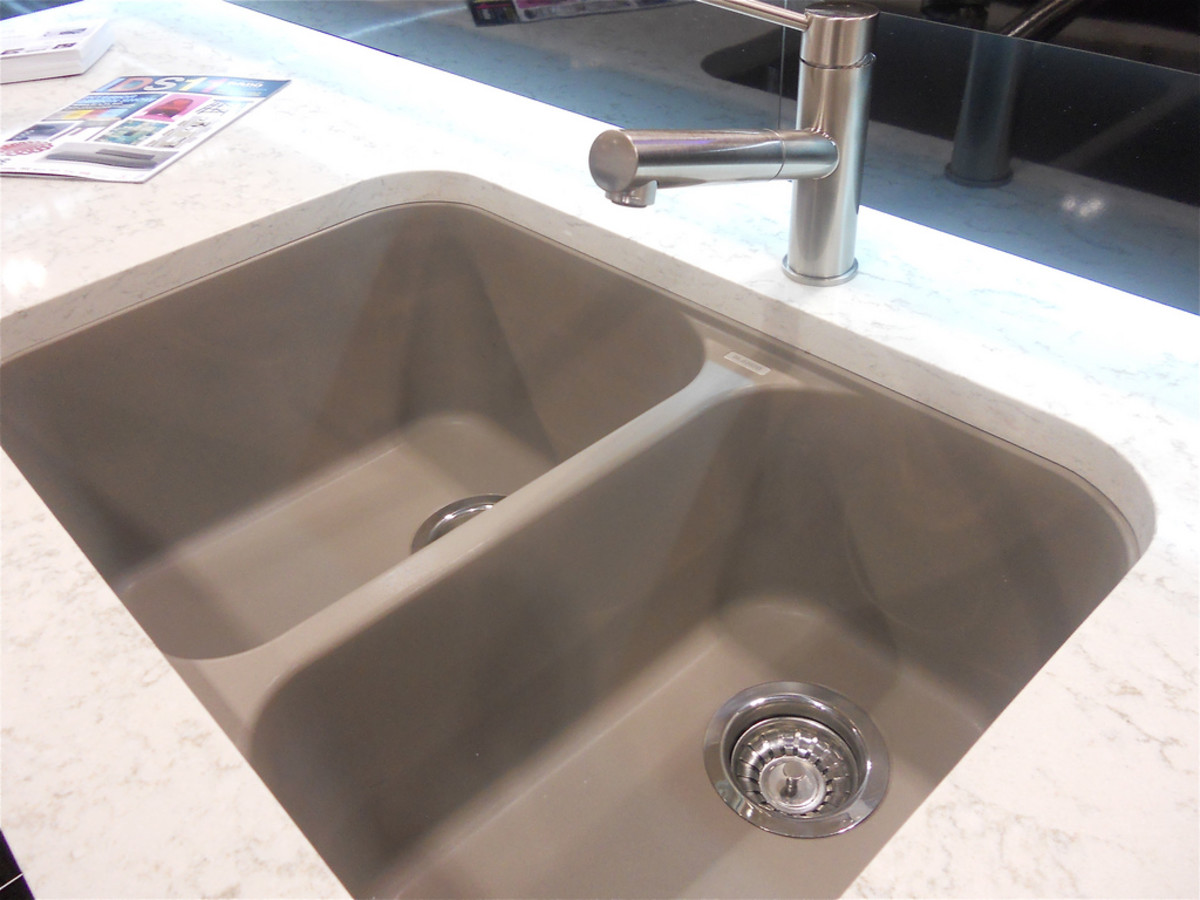 If you already have a composite kitchen sink in your home, you may be wondering why you would need repair services. While composite sinks are highly durable, they are not indestructible and can still get damaged over time. Some common issues that may require repair include cracks, chips, or discoloration.
Cost-Effective:
Repairing a composite sink is often a more cost-effective option than replacing it entirely. With the right repair services, your sink can be restored to its original condition at a fraction of the cost of a new sink.
Preserves the Aesthetic:
Composite kitchen sinks are known for their modern and sleek appearance, and repairing any damages can help preserve this aesthetic. A well-maintained sink can also add value to your home and make it more attractive to potential buyers.
Expertise and Quality:
When it comes to repairing your composite sink, it's essential to choose a professional and experienced service. They will have the knowledge and expertise to properly assess and repair any damages, ensuring a high-quality and long-lasting result.
In conclusion, composite kitchen sinks offer many benefits for your house design and can last for many years with proper maintenance and occasional repairs. By choosing composite kitchen sink repair, you can keep your sink looking and functioning its best, making it a worthwhile investment for your home.
If you already have a composite kitchen sink in your home, you may be wondering why you would need repair services. While composite sinks are highly durable, they are not indestructible and can still get damaged over time. Some common issues that may require repair include cracks, chips, or discoloration.
Cost-Effective:
Repairing a composite sink is often a more cost-effective option than replacing it entirely. With the right repair services, your sink can be restored to its original condition at a fraction of the cost of a new sink.
Preserves the Aesthetic:
Composite kitchen sinks are known for their modern and sleek appearance, and repairing any damages can help preserve this aesthetic. A well-maintained sink can also add value to your home and make it more attractive to potential buyers.
Expertise and Quality:
When it comes to repairing your composite sink, it's essential to choose a professional and experienced service. They will have the knowledge and expertise to properly assess and repair any damages, ensuring a high-quality and long-lasting result.
In conclusion, composite kitchen sinks offer many benefits for your house design and can last for many years with proper maintenance and occasional repairs. By choosing composite kitchen sink repair, you can keep your sink looking and functioning its best, making it a worthwhile investment for your home.




